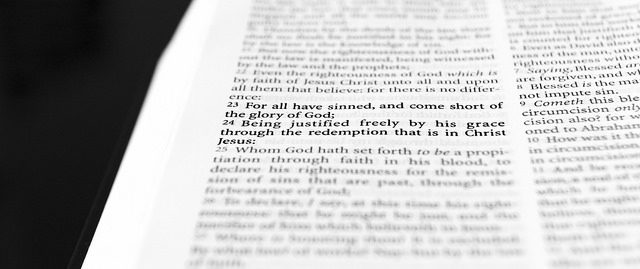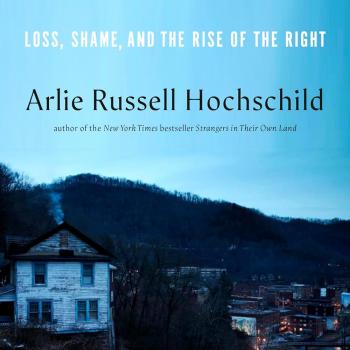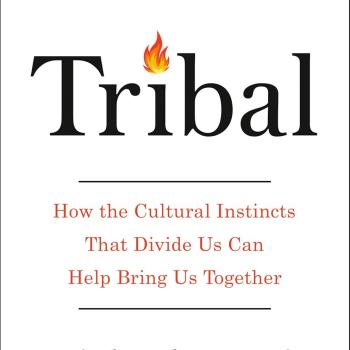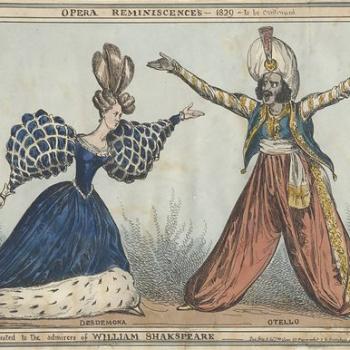If you ask 100 Christians to list the foundational doctrines of the faith, I suspect few would mention “union with Christ.” If so, Wendel Sun’s claim is even more striking and significant. In his new book A New People in Christ: Adam, Israel, and Union with Christ in Romans, he argues that “union with Christ” is central to New Testament theology.

Central? Really?
To make that assertion, one had better defend it from the Bible. Otherwise, we should dismiss it such claims as being a mere personal preference, a theologian’s “pet doctrine.”
Sun does more than list a few proof texts to defend the importance of union with Christ. He traces this theme throughout the entire letter of Romans. The advantage of this approach is that readers are not lost in a myriad of texts were Sun to survey the entire New Testament. By focusing on a Romans, we see how the doctrine functions in context. What’s more, demonstrating the primacy of this doctrine within Romans should alert us to its importance elsewhere.
Paul goes old school
I like bold theologians… so long as they do rigorous exegesis, not mere speculation theologizing. If Sun only demonstrated that “union with Christ” pervades the book of Romans, that would be an accomplishment. But he goes further.
He states his thesis in a sentence:
A study of Romans with careful attention given to Paul’s use of the OT shows that the Adam and Israel stories together form the background of union with Christ within the epistle. (p. 2)
When I first heard this suggestion, I wondered, “How is Sun going to show that?” Although many theologians have explained Paul’s use of the OT within Romans, few people give extensive attention to the link between union with Christ and the OT. Typically, such discussions are limited to passing references to Adam, especially in the context of Romans 5.
While reading A New People in Christ, one is reminded that we can barely understand Paul’s message without grasping the significance of Israel’s story. Accordingly, the value of Sun’s book goes well beyond understanding a single doctrine “union with Christ.” It serves as an excellent example of theological and exegetical method. Along the way, he introduces readers to several critical issues in biblical theology, demonstrating how Paul weaves them into a single theological tapestry.
Restoring the glory of God
Sun takes a surprising but fresh approach and so exposes a major gap in the literature. He says,
The argument here will show that when one recognizes the importance of union with Christ in Romans, it will lead to a complementary recognition of the honor/shame motif. (p. 37)
That grabbed my attention. “How so?” one might ask. Sun answers,
The concept of union with Christ will be shown to include the notion of restored honor and this restoration is equal among all those who are “in Christ.” (p. 38)
The emphasis of this book is Paul’s use of honor and shame with regard to 1) one’s standing before God and 2) one’s status as a member of the new covenant community. Further, particular to the argument offered here is the use of honor and shame in Paul’s exposition of union with Christ in Romans. In short, Paul presents union with Christ as a restoration of the shared glory of God, which was lost through the sin of Adam. (p. 38)

Sun rightly treats honor and shame as a social and theological theme. His perspective adds to a growing body of work that contributes to a theology of honor and shame. Fortunately, I was able to incorporate several of Sun’s insights in Reading Romans with Eastern Eyes (coming out in February).
We “in Christ” join Israel’s story
Sun’s method aptly draws from various scholars who demonstrate the fundamental importance of narrative for interpreting Paul’s letters. With this perspective, one does not mentally dichotomize the stories of Adam and Israel. In fact, Sun argues,
Paul understands the stories of Adam and Israel as intimately related such that together they form one continuous metanarrative. Rather than isolated stories, the Adam and Israel narratives are pieces of a unified story. The integration of these narratives can be seen from the first chapter of Romans and each additional occurrence of an allusion to Adam: an allusion to Israel’s story, usually related to Israel’s sin, is found within the near context. (p. 230; cf. 77, 131–32)
So, where does the “in Christ” part come into play? Sun’s answer is a summary rooted in Romans 1–8.
Jesus’s resurrection is his vindication (Rom 1:3–4), but the vindication of believers comes via identification with Jesus in his death and resurrection (Rom 6:1–11). Indeed, the death and resurrection of Christ is clearly the grounds for “no condemnation” (Rom 8:1, 32). Thus, the vindication of the servant (Jesus) is also vindication for his people as they participate in his story. (p. 202)
Christ is the embodiment of Israel story and the resolution of Adam’s story. To be “in Christ” is to join in a narrative that spans all of human history.
Let’s not forget Romans 12–16
Sun’s presentation in A New People in Christ is both balanced and broad. On the one hand, Sun does not find union with Christ beneath every textual rock. Where Paul is less explicit, he offers an honest assessment.
while “in Christ” and related phrases are not used in Rom 9:30—10:21, the concept can be detected beneath the surface of the argument through Paul’s OT narrative-based Christology. As in Rom 1–8, the focus on Christ as the τέλος of the OT story calls people, Jew and Gentile alike, to participate in his story through faith. (p. 217)
On the other hand, Sun explores all of Paul’s letter. Like so many other doctrines, many people treat union with Christ as a teaching limited to Romans 1–11. Sun does not settle for good enough. He considers how Paul applies this doctrine in the final chapters of Romans.
In Rom 12–16, Paul demonstrates the outworking of union with Christ in church life. Fundamental to this teaching is the new identity of believers: they are the people of God in Christ. As such, social status and ethnicity are set aside for the more fundamental identity as a people, Jew and Gentile together, united to Christ. (p. 232)
Implications for Contextualization
A New People in Christ is the groundwork for Sun’s article in ChinaSource titled “Union with Christ and Contextualization in China.” I won’t rehash everything he says there. Sun’s writing style is clear and easy to read. His article is an excellent introduction for anyone interested to know how union with Christ might help us to contextualize ministry in China and elsewhere.













